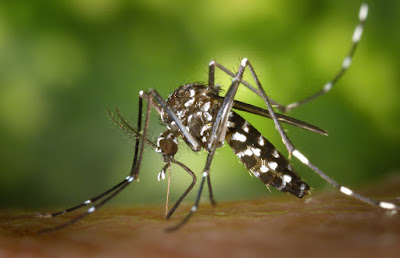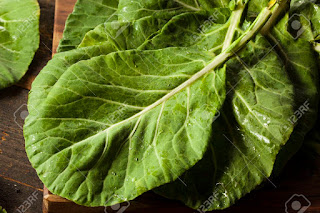James
Friday, October 16, 2020
Collard greens
James
Saturday, September 26, 2020
Cats
CATS (Felis catus)
THE HISTORY
OF CATS & HUMANS
In ancient times
long before recorded civilization, roaming tribes of humans were followed by
rodents, mice and rats which were very destructive to stored crops. In Asia Minor cats began to follow these
nomads, feasting on the rodent populations. This new relationship was welcomed by humans
who saw cats as their protectors. This
was the first major step in the domestication of cats.
The second step came as early as 4,000 years
ago when Ancient Egyptians domesticated cats.
Imagine living in a time and place where every home was teeming with tiny, dangerous beasts. Some new threat lurked at every corner, snakes hiding in clay jars, rats spoiling massive amounts of stored grain, venomous scorpions creeping under cradles. In this time and place in Ancient Egypt, one creature existed that could make the world safer from these little monsters, the cat.
Like their wild relatives, domestic cats are
natural hunters able to stalk prey and pounce with sharp claws and teeth. They are particularly effective at night,
when their light-reflecting eyes allow them to see better than much of their
prey. Cats also enjoy acute hearing. All cats are nimble and agile, and their long
tails aid their outstanding balance.
Soon after their introduction to Egypt, the Egyptian
religion began to worships cats as gods and created laws making injuring or
killing cats a punishable crime. One of the earliest deities of ancient Egypt was the
goddess Mafdet, who was highly revered by people seeking protection
against venomous animals like snakes and scorpions. She was shown with a variety of fierce, feline
forms, most often as a woman with the head of a lion, cheetah, or house-cat. Because cats could protect against the tiny
monsters that made Egyptian homes unsafe, Mafdet was regarded as the protector
of the home and of the kingdom itself!
We tend to joke about how cats feel entitled to worship. Anyone who’s ever known a spoiled tomcat knows that cats have never forgotten the days when they were worshiped. The worship of cats in ancient Egypt was well-founded. Cats once saved lives by defending families from vermin. Without them, civilization as we know it might have never survived!
Cats were later used on trade ships to
protect precious grains and cargo from rodents.
This began the cat's journey, traveling throughout the known world
and being adopted by other cultures for
their hunting skills and as companions. Cats
finally reached Europe around 900 BC with the Roman legions.
Cats communicate by marking trees, fence
posts, or furniture with their claws or their waste. These 'scent posts' are meant to inform
others of a cat's home range. House cats
employ a vocal repertoire that extends from a purr to a screech.
Domestic cats remain largely carnivorous,
and have evolved a simple gut appropriate for raw meat. They also retain the rough tongue that can
help them clean every last morsel from an animal bone and groom themselves. Their diets vary with the whims of humans,
however, and can be supplemented by the cat's own hunting successes.
The Felidae family is split into two subfamilies, Pantherinae (big cats: tiger, lion, jaguar, leopard, snow leopard, clouded leopard and Sunda clouded leopard) and Felinae (all other species). The exact number of species is unclear, as some subspecies are occasionally referred to as distinct species such as the Iriomote cat, but there are roughly 40 species described by scientists.*
*Tiger photograph and information by Paul Williams, a TV producer and wildlife photographer, based at the BBC Natural History Unit.
Thursday, August 6, 2020
Japanese Knotweed
When Siebold sent a variety of plant specimens to the Royal Botanical Gardens at Kew in August 1850, including Japanese Knotweed, he had no idea what he was unleashing on the world.
 |
With its beautiful heart shaped leaves, Japanese Knotweed has a pleasing appearance to the eye. It is what we can't see underground that is the problem. |
The "crown" or "head" of a knotweed infestation can be the size of a bull's head, with scores of roots radiating out from it like strands of hair.
 |
In early spring knotweed's tender leaves are a food source for deer. In many cultures knotweed is eaten by humans. |
 |
In this photographs my dogs Ally (American Foxhound) and Lexie (Husky mix) lead me though a jungle of Japanese knotweed. This deer path would quickly disappear without its constant use by our local deer populations. |
 |
Knotweed is used around the world in herbal remedies and medications. It's negative effects on native plants and wildlife is now a major problem around the world. |
Sunday, July 26, 2020
Mosquitoes
 |
The female mosquitoes require a blood feeding to develop eggs. Some feed only on birds while most species blood feds on many animals including humans. |
More than 60 different kinds of mosquitoes have been identified in New Jersey. In the 1990's a new mosquito invaded New Jersey. The Asian Tiger Mosquito, a black mosquito with distinct white markings bites her prey during daylight hours.
All mosquitoes develop from eggs deposited by females that have previously fed on
 |
When I was a child our native mosquitoes only fed at night. In 1914 the newly introduced Tiger Mosquitoes from Asia began to feed on their hosts during daylight hours making it a 24 hour ordeal. |
 |
Destroying breeding habitats is the best non-chemical, natural control possible. |
Wednesday, April 22, 2020
Earthworms 2
 |
Good garden soil should have ten earthworms per square foot. |
 |
An earthworm can live six years in the wild. |
soil. Scatter it on top or rake it in and the worms will do
the rest. This practice adds nutrients to your garden which
is as good for your plants as it is for your worms.
remember how essential they are and rather than just
tossing it to the side - cover it back up. Earthworms
wither and die quickly when left in the sun.
For more information on earthworms and other amazing creatures visit the National Geographic website
Tuesday, April 21, 2020
Earth Day 50 th anniversary
 |
April 22, 1970 Earth Day march |
 |
Earth Day founder Gaylord Nelson worked with conservatives to create the first Earth, April 22, 1970 |
 |
Known as the "crying Indian" became the face of the anti-littering movement. |
 |
The social and cultural environments we saw in 1970 are rising up again today, a fresh and frustrated generation of young people such as Greta Thunberg are refusing to settle for platitudes, instead taking to the streets by the millions to demand a new way forward. Digital and social media are bringing these conversations, protests, strikes and mobilizations to a global audience, uniting a concerned citizenry as never before and catalyzing generations to join together to take on the greatest challenge that humankind has faced.
By tapping into some of the legacy of the first Earth Day while also channeling the energy, excitement, and coordination of the youth climate strikes, we can build a movement going into the 50th anniversary that goes to the very heart of what Earth Day is all about, empowering individuals with the information, the tools, the messaging and the communities needed to make an impact and drive change.




















